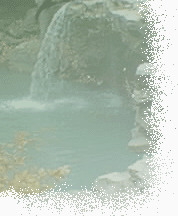
Creating
the Context
Home
Research Focus
Background Info
Research Methods
Data Submission
Results of Study
Data Analysis
Conclusion
Further Research
Guided
Research
Research Question
Background Info
Research Methods
Data Submission
Results of Study
Data Analysis
Conclusion
Further Research
Research Values
Student
Research
Doing Research
Publish
View
Tools
Discussions
Stream Teams
Water Links
|
|
Water Quality Index Research Methodologies: Dissolved
Oxygen
[Dissolved Oxygen Background]
Dissolved oxygen levels can be determined using a variety of tests.
AccuVac checks, electronic monitoring, and drop titration are just a few of
the methods available. Most tests involve a colormetric change.
Listed below are the instructions for using the Hach Company's OX-2P
model 1469-00. It uses the Winkler drop titration method for determining
DO amounts.
- Remove the stopper and rinse the dissolved oxygen (DO) sample
bottle (round, 60ml glass bottle with stopper) with water to be sampled.
Empty the bottle.
- Immerse the DO bottle beneath the river's surface away from the
shore. Use gloves to avoid contact with the river.
- Tilt the bottle upstream to fill and allow the water to overflow
for two to three minutes. (This will make sure air from the bottle will
not be mixed with the stream water.)
- Stopper the bottle quickly making sure that you DO NOT
TRAP ANY AIR BUBBLES. (The best way to do this is to
place the sample bottle on a level, flat surface and then carefully drop the
stopper into place.)
- Use the clippers to open one Dissolved Oxygen 1 reagent silver
foil packet and one Dissolved Oxygen 2 reagent white foil packet.
Remove the stopper. Add the contents of each of the packets to the
water sample.
- Stopper the bottle carefully. MAKE SURE THERE ARE NO AIR BUBBLES. Grip the bottle and stopper firmly. Shake the
bottle vigorously to mix. A flocculate (floc) precipitate will form if
oxygen is present. The precipitate will be brownish-orange in color. A small amount of powdered reagent may remain stuck to the bottom of the
bottle. This will not affect the results.
- Allow the sample to stand until the floc has settled about
halfway in the bottle. Shake the bottle again. Let it stand once more
until the upper half of the sample is clear.
- Use the clippers to open one Dissolved Oxygen 3 reagent
powder pillow (found in the large round plastic container). Remove the
stopper and add the contents of pillow 3. Carefully restopper the bottle.
Check to make sure there are no air bubbles. Shake to
mix. The floc will dissolve and an amber color will develop if oxygen is
present.
- Fill the small round plastic measuring tube to the top with the
amber colored sample water. This tube measures the correct amount of
sample to be tested. Put the stopper back on the DO bottle with the
extra amber colored sample water and set it aside. This extra sample
water will not be used.
- Empty the tube of sample water into the square mixing bottle.
Place the bottle on top of a white piece of paper so that the color change
shows up better.
- Unscrew the top of the brown sodium thiosulfate bottle. Fill the
eyedropper with the sodium thiosulfate. Hold the dropper straight up-
and-down over the square mixing bottle and add one drop at-a-time
into the amber colored water sample in the square mixing bottle. Swirl
the bottle after each drop. Count the number of drops it takes to turn
the water sample from amber to clear.
- Record the number of drops it took to turn the sample in the
square mixing bottle to clear. Each drop is equal to 1 mg/1 of dissolved
oxygen. For example, if it takes 8 drops to turn the sample clear, then
there are 8 mg/1 of dissolved oxygen in the sample.
- When finished, pour the treated samples into the waste water
bottle. Rinse the bottles and tube. Put everything back into the DO kit
and return the kit to its container.
|

